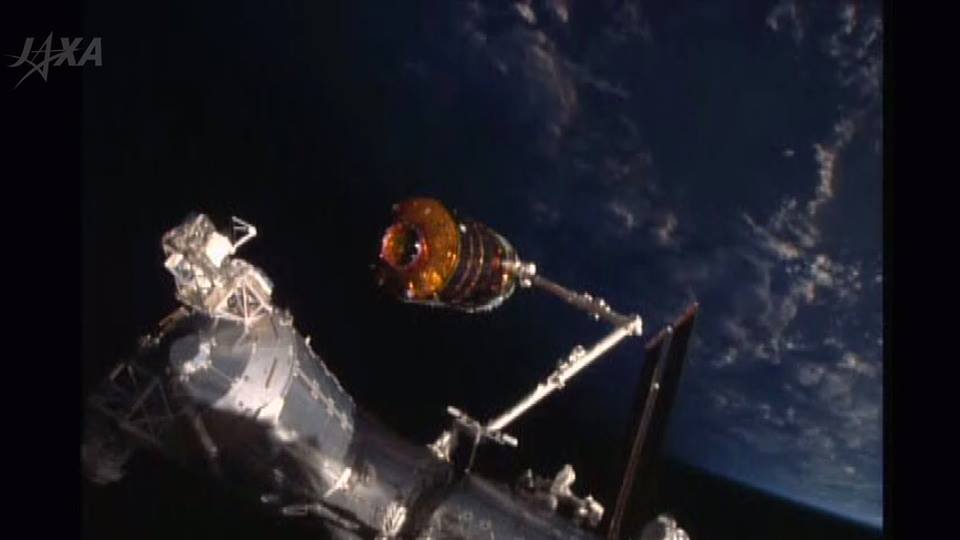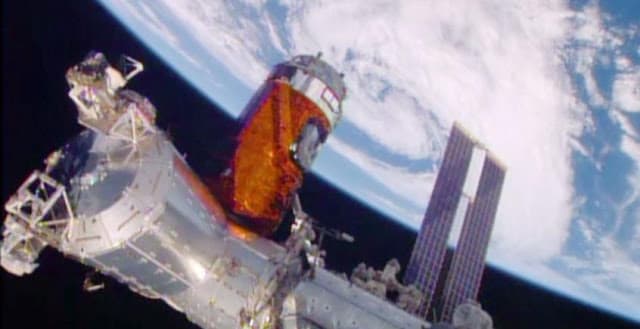
Completing a five-day rendezvous that began with launch last Wednesday, a Japanese cargo ship loaded with 4.5 tons of much-needed supplies and equipment pulled up to the International Space Station (ISS) early Monday and then stood by while Japanese astronaut Kimiya Yui, operating the lab's robot arm, locked onto a grapple fixture. Flight controllers at the Johnson Space Center in Houston then took over remote control of the arm as planned and pulled the HTV-5 "Kounotori," or White Stork, supply ship in for berthing at the Earth-facing port of the forward Harmony module.

Once the HTV was properly positioned, astronaut Scott Kelly commanded motorized bolts in the common berthing mechanism to drive home and at 10:22 a.m. EDT (GMT-4), the attachment process was complete.

The crew opened the hatches today to HTV-5 vehicle and began unloading new supplies and science gear. The station residents also studied human research and reviewed changes to emergency procedures.
The HTV-5 is delivering more than 8,000 pounds of equipment, supplies and experiments in a pressurized cargo compartment. The unpressurized compartment is delivering the 1,400-pound CALorimetric Electron Telescope (CALET) investigation, an astrophysics mission that will search for signatures of dark matter and provide the highest energy direct measurements of the cosmic ray electron spectrum.
Included in the research complement were six samples of alcoholic spirits provided by the Japanese distiller Suntory. But the beverages will not be consumed aboard the station. Instead, the samples will stored and returned to Earth in one to two years to find out how gravity, or the absence thereof, affects the spirits' aging and "mellowness."
Also on board the HTV: equipment that was added in the wake of the June SpaceX failure, including two filtration beds for the station's water recycling system, a control and pump assembly for urine processing, a respiratory medical pack and spacewalk support equipment.
HTV-5 will remain attached to the space station until Sept. 26. Between now and then, the spacecraft will be unloaded and then repacked with trash and no-longer-needed equipment. After unberthing, the spacecraft will plunge back into the atmosphere and burn up.
Japan has previously launched four such vehicles and all of them have successfully accomplished their mission.
Credit: NASA, cbsnews.com



















